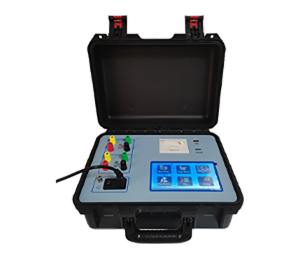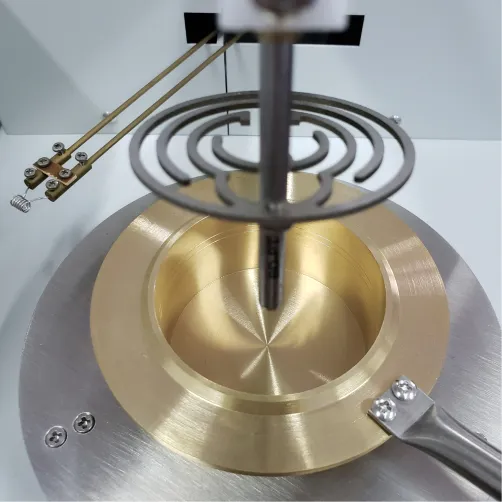TEL:
+86-0312-3189593
 English
English

Telephone:0312-3189593

Email:sales@oil-tester.com

-
 Afrikaans
Afrikaans -
 Albanian
Albanian -
 Amharic
Amharic -
 Arabic
Arabic -
 Armenian
Armenian -
 Azerbaijani
Azerbaijani -
 Basque
Basque -
 Belarusian
Belarusian -
 Bengali
Bengali -
 Bosnian
Bosnian -
 Bulgarian
Bulgarian -
 Catalan
Catalan -
 Cebuano
Cebuano -
 China
China -
 China (Taiwan)
China (Taiwan) -
 Corsican
Corsican -
 Croatian
Croatian -
 Czech
Czech -
 Danish
Danish -
 Dutch
Dutch -
 English
English -
 Esperanto
Esperanto -
 Estonian
Estonian -
 Finnish
Finnish -
 French
French -
 Frisian
Frisian -
 Galician
Galician -
 Georgian
Georgian -
 German
German -
 Greek
Greek -
 Gujarati
Gujarati -
 Haitian Creole
Haitian Creole -
 hausa
hausa -
 hawaiian
hawaiian -
 Hebrew
Hebrew -
 Hindi
Hindi -
 Miao
Miao -
 Hungarian
Hungarian -
 Icelandic
Icelandic -
 igbo
igbo -
 Indonesian
Indonesian -
 irish
irish -
 Italian
Italian -
 Japanese
Japanese -
 Javanese
Javanese -
 Kannada
Kannada -
 kazakh
kazakh -
 Khmer
Khmer -
 Rwandese
Rwandese -
 Korean
Korean -
 Kurdish
Kurdish -
 Kyrgyz
Kyrgyz -
 Lao
Lao -
 Latin
Latin -
 Latvian
Latvian -
 Lithuanian
Lithuanian -
 Luxembourgish
Luxembourgish -
 Macedonian
Macedonian -
 Malgashi
Malgashi -
 Malay
Malay -
 Malayalam
Malayalam -
 Maltese
Maltese -
 Maori
Maori -
 Marathi
Marathi -
 Mongolian
Mongolian -
 Myanmar
Myanmar -
 Nepali
Nepali -
 Norwegian
Norwegian -
 Norwegian
Norwegian -
 Occitan
Occitan -
 Pashto
Pashto -
 Persian
Persian -
 Polish
Polish -
 Portuguese
Portuguese -
 Punjabi
Punjabi -
 Romanian
Romanian -
 Russian
Russian -
 Samoan
Samoan -
 Scottish Gaelic
Scottish Gaelic -
 Serbian
Serbian -
 Sesotho
Sesotho -
 Shona
Shona -
 Sindhi
Sindhi -
 Sinhala
Sinhala -
 Slovak
Slovak -
 Slovenian
Slovenian -
 Somali
Somali -
 Spanish
Spanish -
 Sundanese
Sundanese -
 Swahili
Swahili -
 Swedish
Swedish -
 Tagalog
Tagalog -
 Tajik
Tajik -
 Tamil
Tamil -
 Tatar
Tatar -
 Telugu
Telugu -
 Thai
Thai -
 Turkish
Turkish -
 Turkmen
Turkmen -
 Ukrainian
Ukrainian -
 Urdu
Urdu -
 Uighur
Uighur -
 Uzbek
Uzbek -
 Vietnamese
Vietnamese -
 Welsh
Welsh -
 Bantu
Bantu -
 Yiddish
Yiddish -
 Yoruba
Yoruba -
 Zulu
Zulu
Feb . 20, 2025 02:39
Back to list
types of tap changer
Transformers are the unsung heroes of our modern electrical infrastructure, and within these mighty machines, tap changers play a pivotal role. Tap changers are integral for adjusting the voltage levels and ensuring that electricity is delivered efficiently and safely across power networks. Understanding the types of tap changers can enhance one's expertise in electrical engineering and inform better decision-making when selecting or maintaining transformers.
Trustworthiness and operational history also play a critical role in selecting the appropriate tap changer. Selecting established manufacturers with a proven track record ensures that the technology is both reliable and supported by robust maintenance strategies. Experts in transformer technology recommend diligent inspection and maintenance schedules, regardless of the tap changer type, to maximize transformer performance and longevity. Expert analysis underscores the importance of factoring in environmental conditions when making a choice. For instance, high-humidity areas may expedite oil degradation in oil-immersed OLTCs, necessitating more frequent maintenance and monitoring. Meanwhile, vacuum models promise enhanced durability in challenging environments but initially require a higher investment, representing a long-term commitment to operational savings and durability. Delving into cutting-edge innovations, some industry leaders are developing advanced sensor integration for tap changers. These sensors offer real-time diagnostics and predictive maintenance alerts, drastically decreasing the risk of unexpected failures. Such innovations underscore the tapping device's role in advancing toward a more intelligent and responsive electrical network infrastructure. Additionally, sustainability considerations are becoming increasingly significant in selection criteria. Environmentally friendly technologies, such as biodegradable oils for oil-immersed OLTCs or the zero-emission operation of vacuum units, align with modern ecological mandates. Evaluating a tap changer’s environmental impact alongside its technical specifications can provide a holistic approach to infrastructure development. In conclusion, the diverse types of tap changers each offer unique advantages and challenges that are best approached with a nuanced understanding of the specific application requirements. Leveraging on-load or off-load types appropriately can increase system reliability and efficiency. The insights into the balance of cost, maintenance, and operational demands empower decisions that yield benefits long-term— minimizing downtime, enhancing system adaptability, and embracing technological advancements for smarter, more sustainable power systems. By integrating industry authority and real-world experience, professionals can make well-informed, strategic choices in the deployment and management of transformers, ensuring optimized performance and sustained energy delivery.


Trustworthiness and operational history also play a critical role in selecting the appropriate tap changer. Selecting established manufacturers with a proven track record ensures that the technology is both reliable and supported by robust maintenance strategies. Experts in transformer technology recommend diligent inspection and maintenance schedules, regardless of the tap changer type, to maximize transformer performance and longevity. Expert analysis underscores the importance of factoring in environmental conditions when making a choice. For instance, high-humidity areas may expedite oil degradation in oil-immersed OLTCs, necessitating more frequent maintenance and monitoring. Meanwhile, vacuum models promise enhanced durability in challenging environments but initially require a higher investment, representing a long-term commitment to operational savings and durability. Delving into cutting-edge innovations, some industry leaders are developing advanced sensor integration for tap changers. These sensors offer real-time diagnostics and predictive maintenance alerts, drastically decreasing the risk of unexpected failures. Such innovations underscore the tapping device's role in advancing toward a more intelligent and responsive electrical network infrastructure. Additionally, sustainability considerations are becoming increasingly significant in selection criteria. Environmentally friendly technologies, such as biodegradable oils for oil-immersed OLTCs or the zero-emission operation of vacuum units, align with modern ecological mandates. Evaluating a tap changer’s environmental impact alongside its technical specifications can provide a holistic approach to infrastructure development. In conclusion, the diverse types of tap changers each offer unique advantages and challenges that are best approached with a nuanced understanding of the specific application requirements. Leveraging on-load or off-load types appropriately can increase system reliability and efficiency. The insights into the balance of cost, maintenance, and operational demands empower decisions that yield benefits long-term— minimizing downtime, enhancing system adaptability, and embracing technological advancements for smarter, more sustainable power systems. By integrating industry authority and real-world experience, professionals can make well-informed, strategic choices in the deployment and management of transformers, ensuring optimized performance and sustained energy delivery.
Previous:
Next:
Latest news
-
Testing Equipment Industry Sees Major Advancements in 2025: Smart & Precision Technologies Lead the WayNewsJun.06,2025
-
Applications of Direct Current Generators in Renewable Energy SystemsNewsJun.05,2025
-
Hipot Tester Calibration and Accuracy GuidelinesNewsJun.05,2025
-
Digital Circuit Breaker Analyzer Features and BenefitsNewsJun.05,2025
-
Benefits of Real-Time Power Quality Monitoring Devices for Industrial EfficiencyNewsJun.05,2025
-
Earth Fault Loop Testing in High-Rise Building Electrical SystemsNewsJun.05,2025



